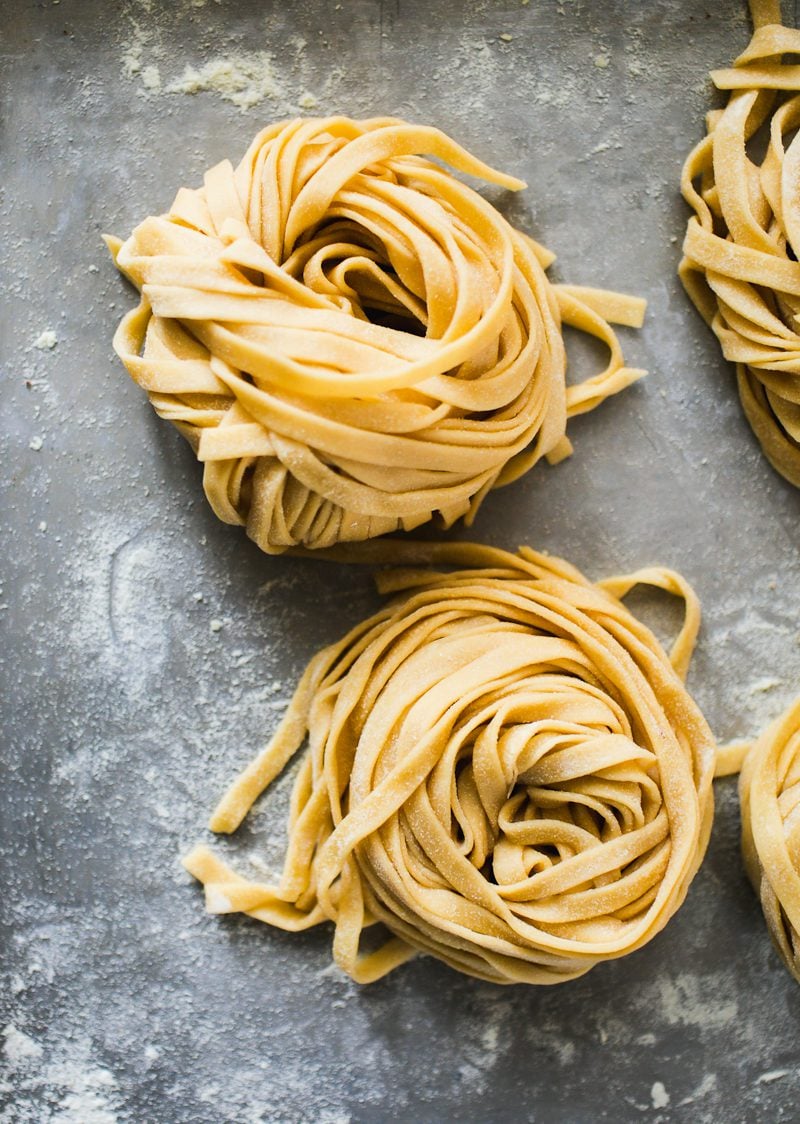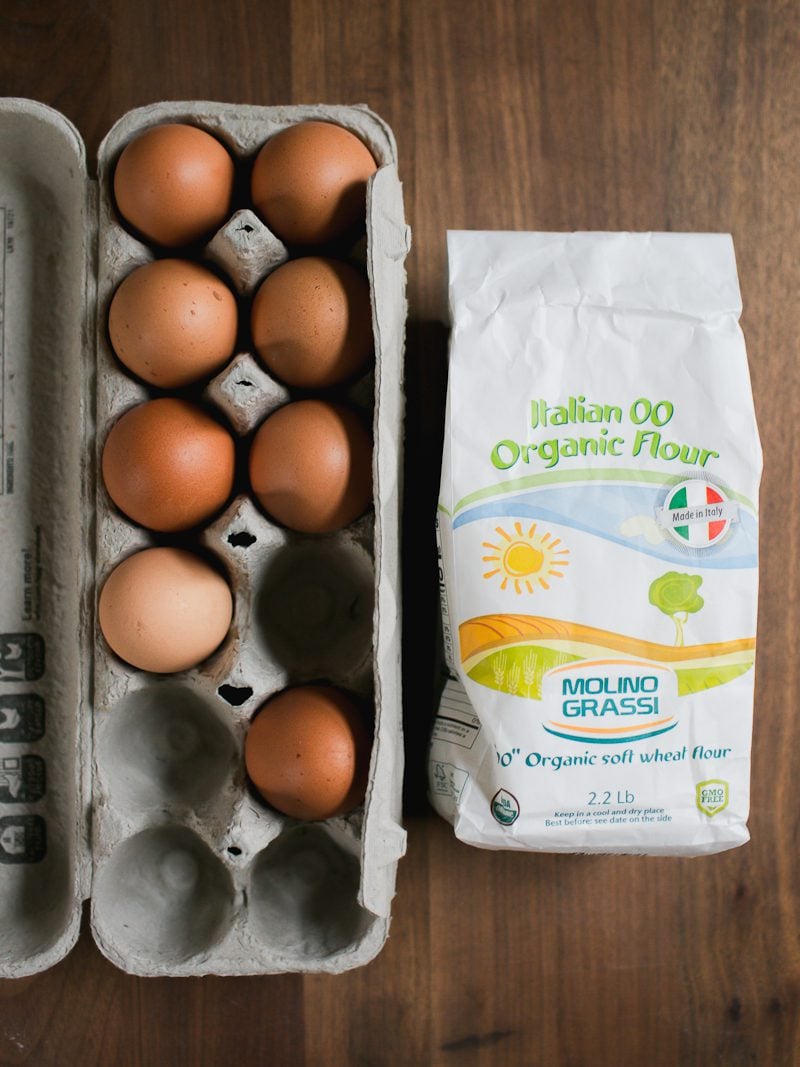This easy, step-by-step recipe & video will teach you how to make fresh homemade pasta with just two simple ingredients (flour and eggs) in approximately 1 hour. Use it to make homemade lasagna noodles, ravioli, pappardelle pasta and more! I’m sharing my best tips and tricks from cooking at home & from our restaurant, Sfoglia.
Fresh homemade pasta: Too hard? Too time consuming? Most people would assume so, just like making sourdough bread. But if you love fresh pasta, and haven’t tried making it yourself, the art and craft will absolutely captivate you! This was my pandemic activity.
My beginner’s guide and video will outline the process step-by-step. You do not need any special skills to get started. With just flour and eggs, I’ll teach you how to make fresh homemade pasta by hand, with a Kitchen Aid stand mixer (or food processor) in approximately 1 hour!
Finally, did you know homemade pasta is relatively inexpensive to make? Coming in at under $3 for the dough which feeds 4 ppl at least, fresh homemade pasta is the ultimate simple luxury anyone can enjoy!
Mixing, kneading, rolling and cutting homemade pasta dough can all be done with any KitchenAid® stand mixer and a few versatile KitchenAid® attachments—including the All Metal Grain Mill Attachment, to create a variety of homemade flour blends and the Sifter & Scale Attachment to weigh, sift and add flour.

) Cut Sheets Into Pasta
- Before cutting: I like to semi-dry the pasta sheets ever so slightly. This gives the cut pasta strands a more firm and “leathery” finish, rather than a soft and doughy feel (this helps to prevent the strands from sticking together later on).
- To semi-dry: Hang the pasta sheets over the back of a chair or on a rod for about 5-15 minutes. Keep your eye on the time; you don’t want the sheets to dry out completely. Touch them occasionally. You will feel the difference in texture as time goes by.
- To cut: Take a pasta sheet and cut in half. Send it through the cutter attachment. I used the fettuccini shape above.
- Dust the pasta noodles liberally with semolina flour to prevent sticking- don’t skimp here. Coil the pasta around your hand to create a nest or arrange the strands loosely on a tray.
- Repeat the cutting process for the remaining pasta sheets.
TIP: How to Cut Pasta By Hand. Take a pasta sheet, fold it in half, and then fold it over a few times, loosely. Cut across into ribbons of your desired width.

First, A Few Tips:
- Make space. You’ll need a long, clutter-free surface to roll the dough. Do not overlook this tip. Pasta sheets can measure up to 3 ft long! The kitchen table is ideal.
- Weigh your ingredients (including the eggs). This will ensure the pasta dough is the correct texture, which is soft and pliable. If your eggs are too small, the dough will be dry and crumbly. I use this digital scale for accuracy.
- Get ahead. Homemade pasta noodles can be made in advance and stored at room temperature, refrigerated or frozen. See storage options for more details.
- Wrap it up. Pasta dough dries out quickly. Keep it covered at all times. Use plastic wrap, a clean kitchen towel or an upturned bowl (the latter is my favorite).

Pasta Experiment: Mixer vs Hand Kneading
FAQ
Can you knead pasta in a mixer?
Is it better to knead by hand or machine?
Can you use a pasta maker for dough?
Can you make pasta in a machine?
Should I Knead pasta?
However, if you prefer a softer or more delicate texture for your pasta, minimal or no kneading can be done. This alternative approach can result in a lighter and more tender pasta, especially when using softer flours like cake flour or low-gluten alternatives like rice flour.
Can one eat pasta?
Pasta can be part of a diet, but in moderate amounts (100g of dried pasta daily), and it is better when it is made from whole grains rather than refined. Also, you must also have it combined with vegetables. Avoid taken it with fatty foods such as cream and cheese.
Can You knead pasta dough by hand?
There are many modern appliances available that can knead pasta dough effortlessly. However, there is an undeniable satisfaction in kneading the dough by hand. By using your own hands, you have better control over the quality and texture of the dough.
How do you knead homemade pasta?
Use your hands for kneading once the dough begins to form. Adjust the texture by adding small amounts of flour if the dough is too sticky. Letting the dough rest after kneading allows for hydration and gluten relaxation. This improves the rolling out process later. Remember to enjoy the process and have fun creating your homemade pasta!
